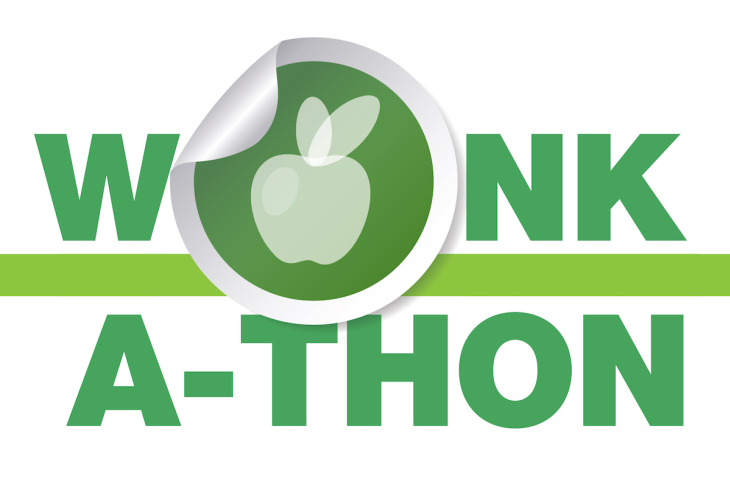Editor’s note: This essay is an entry in Fordham’s 2021 Wonkathon, which asked contributors to address a fundamental and challenging question: “How can schools best address students’ mental health needs coming out of the Covid-19 pandemic without shortchanging academic instruction?” Click here to learn more.
Imagine, if you will, the inner life of a student who’s just returned to the classroom after a year of remote learning. The pandemic has made physical isolation routine, and while being back in school is a welcome change, it’s also disorienting. Students and teachers alike are out of practice with all the interpersonal exchanges—the small moments of connection—that foster and promote trust, community, and strong relationships. The mood in the classroom is shaped not only by the joy of reclaiming one facet of normalcy, but also the collective experience of the past year and the personal challenges and trauma that many individuals have faced.
These challenges, whether related to racial injustice, family struggles, difficulty accessing online learning, or simply the sadness of being separated from peers, weigh heavily on students and educators as they reintegrate into the school environment. For schools, it’s a critically important time to adopt strategies that consider students’ emotional well-being and help them achieve social connectedness and belonging. At the same time, however, schools also need to mitigate pandemic-related interruptions in learning and continue to demonstrate academic growth.
School leaders may feel they’re in a bind: Do they focus on social emotional learning or academic rigor? We feel that this is a false choice. It’s not an either/or proposition—it’s both/and.
Learning, after all, is inherently social. When students learn, they engage in sense-making and discovery in the context of relationships—with teachers, with fellow students, even with the authors of the books they’re assigned to read. Academics are how we measure growth in content knowledge, but it’s the integration of social and emotional concepts that lays the foundation for a positive learning experience and puts students on a path to high levels of achievement. We can’t uncouple social and emotional learning from academics, because they are deeply intertwined.
Positive learning environments are built on trust
As schools seek to create learning environments centered around social emotional development, thus paving the way for academic success, the approaches they use can look quite different from one school to the next. But at the core of most successful efforts, you’ll usually find the same critical element: trust. In a classroom distinguished by high levels of trust, where every interaction serves as an opportunity to establish and strengthen trust-based relationships, you’ll find students who feel safe to open their minds, take risks, and push themselves and their peers to excel.
Understandably, education leaders and policy makers are hungry for products and solutions that will meaningfully improve students’ social and emotional development. But the kind of environment where students thrive doesn’t come in a box; it requires a deep commitment to prioritizing the relational nature of learning. We find it helpful to view this commitment through the lens of UChicago Impact’s 5Essentials: Effective Leaders, Collaborative Teachers, Involved Families, Supportive Environment, and Ambitious Instruction. These elements, which work together to create supportive conditions for learning, are fueled and sustained by high levels of trust at all levels of an organization.
Weaving trust into a school’s cultural fabric is no easy feat, but it enables better and deeper professional work, making the effort well worth it. Professionals who trust each other have stronger collaborations and are better positioned to achieve collective efficacy. Similarly, students who trust their teachers and classmates are more likely to feel a sense of belonging that encourages participation in meaningful academic conversations and makes them more receptive to giving and receiving feedback. As you think in systemic terms about how best to foster trust, here are a few key principles to guide your imagination and help shape your efforts:
- Start with the grownups. It’s natural to focus on what students need from us, but we can’t create a positive learning space for them if the adults in the room don’t trust each other. Kids are remarkably perceptive. If educators don’t have each other’s backs, students will draw their own conclusions about whether it’s a safe environment for taking chances and making mistakes (also known as learning). To create an environment of trust and collaboration that’s optimized for social, emotional, and academic development, we need to foster trust among the adults before we can expect students to feel truly safe and supported.
- Articulate a vision. Trust means different things to different people, so it’s important to be clear about what you mean by it. When you envision the ideal state of your school, what does that look like and feel like? Define your criteria for success and begin to think about how you’ll reach your ideal state via the behaviors, actions, and mindsets of everyone involved. With solid criteria in place, you can more accurately monitor your progress.
- Break it down. As with any improvement effort, you can use an iterative cycle to assess the areas of need, identify barriers and obstacles, elicit feedback, and determine what steps you need to take toward your desired outcome. Be disciplined in pursuing your vision, and make good use of both qualitative and quantitative data in assessing your progress—especially data that captures student and teacher voices.
- Commit—and don’t give up. Busy educators can’t be blamed for wanting a quick fix, but building trust requires a consistent and sustained effort that’s explicitly addressed in meetings, professional learning sessions, and any place where adults come together. Building trust isn’t a temporary remedy to get a school through a rough patch; it’s a commitment to stay receptive and responsive to feedback and to follow through over the long term.
As we navigate our way through this stage of the pandemic and seek a return to normalcy, including relearning the art of simply being together, we find ourselves in a moment that is imbued with opportunity. Teachers and students alike are returning to the classroom wide-eyed and awed by the things they once took for granted, and they’re seeking a way forward. It’s an ideal time to reset our professional relationships, honor the humanity of those around us, and engage in sustained trust-building work. That’s how we’ll create safe, supportive spaces for students to strive for academic success—with the confidence that their social and emotional needs are being seen and met.




